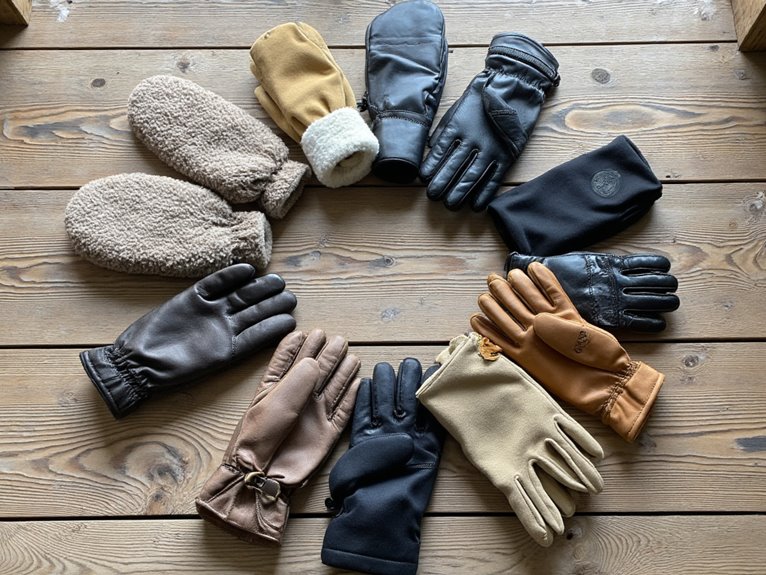Are Pannier Bags Worth It?
Pannier bags have become an indispensable accessory for many cyclists, offering a practical and convenient way to carry gear while promoting safety, comfort, and environmental sustainability. They provide increased storage capacity, improve safety by keeping items off the back, and boost comfort by distributing weight evenly. Key features to ponder include capacity, attachment systems, weather resistance, and materials. Pannier bags come in various sizes and types, catering to different cycling styles and needs. While they may have some drawbacks, pannier bags can greatly augment the cycling experience – and exploring their benefits and features can reveal how they can benefit your ride.
We are supported by our audience. When you purchase through links on our site, we may earn an affiliate commission, at no extra cost for you. Learn more. Last update on 16th January 2026 / Images from Amazon Product Advertising API.
Types of Pannier Bags Available
Various types of pannier bags are available, catering to different cycling styles, terrain, and personal preferences, ranging from sleek and compact designs for commuting to rugged and spacious models for long-distance touring.
Commuter panniers are designed for daily use, featuring waterproof materials and multiple compartments for organization.
Touring panniers, on the other hand, offer ample storage space and durability for extended trips.
Mountain bike panniers are built for rugged terrain, with reinforced materials and secure closures.
Folding panniers provide a convenient and lightweight option for casual riders.
Finally, electric bike panniers are specifically designed to accommodate the unique needs of e-bike riders, offering additional storage for batteries and accessories.
Each type of pannier bag is tailored to meet the specific demands of its intended use.
Benefits of Using Pannier Bags
By opting for pannier bags, cyclists can experience a range of benefits that boost their overall riding experience, from increased convenience and comfort to improved safety and environmental sustainability. These benefits can significantly enhance the cycling experience, making it more enjoyable and practical.
Pannier bags provide three key benefits:
- Increased storage capacity: Pannier bags provide ample space to carry gear, tools, and personal items, keeping them organized and within reach.
- Improved safety: By keeping items off the back and out of the way, pannier bags reduce the risk of accidents and distractions, allowing cyclists to focus on the road ahead.
- Enhanced comfort: Pannier bags distribute weight evenly, reducing strain on the back and shoulders, and providing a more comfortable riding experience.
Key Features to Consider
When selecting a pannier bag, cyclists should carefully evaluate several key features to guarantee they find a model that meets their specific needs and preferences.
One essential aspect to assess is the bag's capacity, ensuring it can hold all necessary gear without compromising stability or comfort.
Another key feature is the attachment system, which should be secure, adjustable, and compatible with the bike's rack.
Additionally, the bag's weather resistance and waterproofing are essential, particularly for riders who frequently cycle in wet conditions.
Other important factors to examine include the bag's weight, durability, and ease of cleaning.
Pannier Bag Materials Matter
In the realm of pannier bag materials, cyclists have several options to choose from, each with its unique set of benefits.
Water-resistant nylon options provide excellent protection against the elements, while durable polyester choices offer exceptional durability and resistance to wear and tear.
Water-Resistant Nylon Options
Manufacturers guarantee that their pannier bags can withstand the elements by using water-resistant nylon, a top choice for cyclists and commuters alike.
Water-resistant nylon pannier bags offer a reliable solution for cyclists and commuters who frequently ride in wet conditions. This material safeguards that belongings remain dry and protected from the elements.
Water-resistant nylon pannier bags have three key benefits:
Water-repellent coating: A special coating prevents water from penetrating the fabric, keeping your gear dry.
Durable construction: Water-resistant nylon is more resistant to tears and abrasions, guaranteeing your pannier bag remains intact.
Easy maintenance: Water-resistant nylon pannier bags are easy to clean and maintain, making them a practical choice for frequent riders.
Durable Polyester Choices
For cyclists seeking a balance between durability and affordability, durable polyester pannier bags offer a reliable alternative to water-resistant nylon options.
While not as water-resistant as nylon, polyester panniers boast impressive durability and resistance to abrasion and tears.
A high-quality polyester pannier can withstand the rigors of daily commuting and touring, withstanding rough roads and inclement weather.
In addition, polyester panniers tend to be more affordable than their nylon counterparts, making them an attractive option for cyclists on a budget.
When choosing a polyester pannier, look for reinforced seams, sturdy zippers, and a durable coating to guarantee a long lifespan.
With proper care, a polyester pannier can provide years of reliable service.
Size and Capacity Options
In terms of pannier bags, size and capacity options are vital considerations for cyclists.
Depending on the type of ride, terrain, and personal preferences, riders require varying levels of storage space to accommodate their gear.
From compact bags for minimalist commuters to spacious carriers for extended touring, the range of size and capacity options available caters to diverse cycling needs.
Small But Mighty Options
What sets small pannier bags apart from their larger counterparts is their remarkable ability to pack a significant amount of gear into a compact, yet highly functional design.
These bags are perfect for daily commutes, short trips, or minimalist cyclists. Despite their small size, they can still carry essentials like a laptop, tools, and a change of clothes.
Weight distribution: Small pannier bags allow for even weight distribution, making them comfortable to ride with.
Easy to maneuver: Their compact size makes them easy to navigate through tight spaces.
Increased visibility: Small pannier bags provide unobstructed views of the road behind, enhancing safety.
Medium Capacity Choices
Medium capacity pannier bags offer a sweet spot between compactness and storage space, providing cyclists with a range of size and capacity options to suit their specific needs.
These bags typically have a capacity between 10-20 liters, making them ideal for daily commutes, weekend getaways, or short bike tours.
They are spacious enough to hold essential items like laptops, clothes, and tools, yet compact enough to maintain a low profile and minimize wind resistance.
Look for bags with adjustable compartments, water-resistant materials, and durable construction to safeguard your gear stays protected and organized.
With medium capacity pannier bags, cyclists can enjoy a balance of storage and portability, making them an excellent choice for a wide range of cycling applications.
Large Load Carriers
Cyclists who need to haul heavy or bulky gear can rely on large load carriers, which boast capacities exceeding 20 liters and often feature reinforced materials, sturdy frames, and cleverly designed compartments to keep their contents secure and organized.
These bags cater to commuters, touring cyclists, and adventure seekers who require ample storage for their gear.
Key benefits of large load carriers include:
Ample storage: Capacities ranging from 20-40 liters, ideal for carrying laptops, tools, and clothing.
Durability: Reinforced materials and sturdy frames ensure the bag can withstand heavy loads and rough handling.
Organization: Multiple compartments and pockets keep gear organized, making it easy to find what you need quickly.
Mounting and Attachment Systems
The stability and security of a pannier bag's mounting and attachment system are crucial factors that directly impact the overall performance and functionality of the bag.
A well-designed mounting system guarantees that the bag remains securely attached to the bicycle, even during rough terrain or inclement weather conditions.
Common attachment systems include Velcro straps, buckles, and clips, which provide varying degrees of adjustability and customization.
Look for systems that offer easy on-and-off functionality, adjustable straps, and durable materials to withstand heavy use.
Additionally, consider the compatibility of the mounting system with your bicycle's rack or frame type to facilitate a seamless integration.
Common Complaints and Drawbacks
While a well-designed pannier bag can greatly improve the cycling experience, some common complaints and drawbacks have been reported by users, which can substantially impact the overall satisfaction with these bags.
Despite their benefits, pannier bags are not immune to criticisms.
Some of the common complaints and drawbacks include:
Weight and bulk: Pannier bags can add significant weight and bulk to the bike, affecting its handling and maneuverability.
Water resistance: While many pannier bags claim to be water-resistant, some users have reported leaks and water damage.
Limited accessibility: Depending on the design, pannier bags can be difficult to access while on the bike, requiring riders to stop and dismount to retrieve items.
Alternatives to Pannier Bags
One alternative to pannier bags that has gained popularity in recent years is the use of bikepacking bags, which offer a more streamlined and lightweight solution for carrying gear.
These bags are designed to be compact and aerodynamic, allowing for faster and more efficient riding.
Another option is the use of seatpost-mounted bags, which provide easy access to essential items like tools, snacks, and a first-aid kit.
For riders who prefer a more minimalist approach, frame bags and top tube bags offer a sleek and unobtrusive way to carry small items.
Ultimately, the choice of alternative to pannier bags will depend on the individual rider's needs and preferences.



